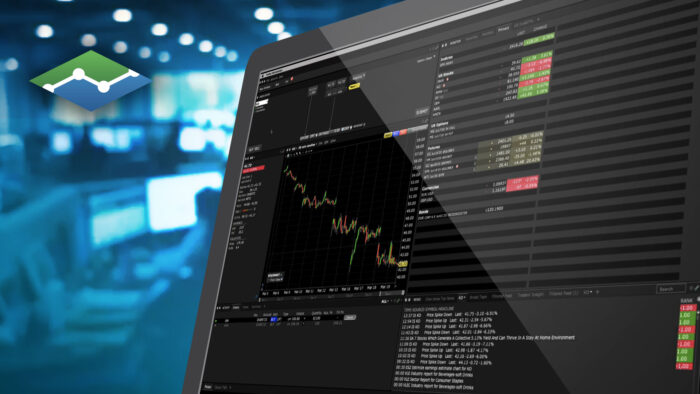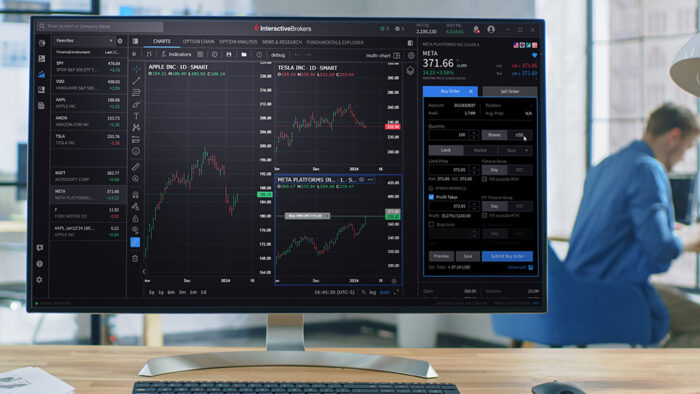Tom Ross, Fixed Income Portfolio Manager, considers the outlook for global high yield corporate bonds in 2024 and the potential tug of war between rates and spreads.
It is no revelation to say that economic growth in 2024 is set to be slow. The consensus view among contributors to Bloomberg’s economic forecasts is that the global economy will grow by less than it did in 2023 – about 2.7% is pencilled in for 2024, compared with around 2.9% in 2023.1 At first glance, that might seem immaterial, but bear in mind that these are real (inflation-adjusted figures), so with the decline in inflation, nominal growth will be weaker. The second point to make is that emerging markets are expected to do a lot of the heavy lifting: the US and the Eurozone in aggregate are expected to grow around 1% in real terms.1
Subdued growth
For high yield corporate bonds, slow economic growth is a world away from no economic growth. It should be sufficient to allow most high yield rated companies to carry on meeting their debt obligations. Corporate fundamentals appear reasonably robust this late in an economic cycle and a well-flagged downturn means companies have had more time to prepare. In fact, expectations for the European economy are already low, which could offer room to surprise on the upside, whereas we still think the market has capacity to be shocked by any weak data emanating from the US.
We are mindful that the lagged impact of monetary tightening could be felt in 2024. Even though we expect central banks in the US and Europe to cut interest rates in the next 12 months, companies that need to undertake refinancing are still facing a jump in financing costs given how low rates were in preceding years.
The cumulative impact of this is likely to curtail profits and encourage companies to cut costs. Given that high yield borrowers tend to be more heavily represented by small and medium sized companies as well as the more cyclical sectors, slower growth will typically be more keenly felt than among investment grade borrowers.
Spread movement
When discussing the high yield asset class, commentators often talk about defaults and while a company failing to meet its obligations is clearly unwelcome, a broader consideration is the movements in spreads (the additional yield that a high yield bond pays over a government bond of similar maturity).
Alongside individual corporate factors, spreads on high yield bonds are heavily driven by sentiment. Towards the end of 2023, expectations of a soft-landing scenario took hold. For spreads to tighten (decline) further requires inflation to be behaved and economies to grow moderately. This did happen in the mid-1990s after the US Federal Reserve (Fed) eased rates, so we do not rule it out. Any evidence of recession in the US, however, and spreads could move wider (higher), potentially undoing any positive effect from central banks cutting rates.
Figure 1: Recession worries need to ease for spreads to tighten further

Note: Past performance is not indicative of future results
Source: Bloomberg, Bloomberg US Corporate High Yield OAS (option-adjusted spread over government), US Federal Reserve Fed Fund Target Rate (upper bound), recession periods as per National Bureau of Economic Research, 31 December 1993 to 30 November 2023. Past performance does not predict future returns.
Decompression (spread widening as you move down the credit spectrum in response to negative news) has principally been among lower rated CCC rated bonds (primarily in Europe), with spreads on BB and B rated bonds actively tightening in 2023. There is logic to this – CCC rated bonds are more vulnerable to default while BB and B are better placed to cope with a sluggish economy – but we think the market may be a little complacent given the potential risks on the horizon. The maturity wall (companies needing to refinance in the next couple of years) has been growing so there is the potential for volatility as the window to delay refinancing shrinks.
Our expectations for defaults in 2024 are that, outside of a sharp recession, they will be higher but more of a plateau than a spike. This more prolonged default cycle pushes the onus onto security selection for longer. In Europe, the lower proportion of CCC rated bonds in that region means the default rate should remain below that in the US.
Finding a firm footing
A potentially bumpy growth outlook next year, in our view, argues for a nimble investment approach. The risk of spread widening poses a greater problem for more cyclical sectors, so our preference is for sectors with more predictable cash flows such as healthcare. We are selective in terms of consumer-facing sectors but see opportunities in food retailers, given their more reliable revenues and nascent easing in cost inflation. We believe certain areas of leisure continue to offer attractive prospects provided the jobs market remains resilient. In our view, the telecom sector faces some structural challenges as this mature industry carries high levels of debt yet needs to meet some significant capital expenditure requirements.
The directional pull
Yields on bonds adjusted higher in response to inflation and higher interest rates but that adjustment is, in our view, done. Central banks have been successful in their war on inflation, so rate cuts should be a given, although the timing of cuts will be another source of volatility. We are mindful that average yields on high yield bonds of 7.1% in Europe and 8.5% in the US provide an attractive income and a potential cushion against mishaps.2 In fact, a 1% decline in yield on a bond yielding 8.5% has the potential to deliver low double-digit total returns over a 12-month period, provided the bond does not default.3 So, there is much to play for if a soft landing comes to fruition.
For much of 2022 and 2023, fund flow data for the high yield asset class was dominated by outflows.4 November 2023 saw an improvement in sentiment as investors chased yield and the soft-landing scenario gained credence. With markets having been negative towards the asset class over the last two years, a drip-drip of positive flows could be supportive in the near term.
In summary, therefore, the prospects for high yield bonds remain dependent on the unfolding economic data. We believe that security selection will be increasingly important in a period where defaults are likely to creep higher and the lagged effect of policy tightening may be most acute. A tug of war could take place between spreads and rates. Contained inflation and sluggish economies should allow central banks to cut rates and for government bond yields to fall. While this could help pull down yields on high yield bonds, we anticipate the lagged impact of monetary tightening to cause the occasional growth scare. Throughout 2023 we experienced several reversals in sentiment and we anticipate more of the same in 2024 as bouts of optimism and pessimism around economic growth causes volatility in spreads. It will be a year for vigilance, but volatility should present opportunities.
IMPORTANT INFORMATION
Fixed income securities are subject to interest rate, inflation, credit and default risk. The bond market is volatile. As interest rates rise, bond prices usually fall, and vice versa. The return of principal is not guaranteed, and prices may decline if an issuer fails to make timely payments or its credit strength weakens.
High-yield or “junk” bonds involve a greater risk of default and price volatility and can experience sudden and sharp price swings.
Disclosure: Janus Henderson
The opinions and views expressed are as of the date published and are subject to change without notice. They are for information purposes only and should not be used or construed as an offer to sell, a solicitation of an offer to buy, or a recommendation to buy, sell or hold any security, investment strategy or market sector. No forecasts can be guaranteed. Opinions and examples are meant as an illustration of broader themes and are not an indication of trading intent. It is not intended to indicate or imply that any illustration/example mentioned is now or was ever held in any portfolio. Janus Henderson Group plc through its subsidiaries may manage investment products with a financial interest in securities mentioned herein and any comments should not be construed as a reflection on the past or future profitability. There is no guarantee that the information supplied is accurate, complete, or timely, nor are there any warranties with regards to the results obtained from its use. Past performance is no guarantee of future results. Investing involves risk, including the possible loss of principal and fluctuation of value.
Disclosure: Interactive Brokers
Information posted on IBKR Campus that is provided by third-parties does NOT constitute a recommendation that you should contract for the services of that third party. Third-party participants who contribute to IBKR Campus are independent of Interactive Brokers and Interactive Brokers does not make any representations or warranties concerning the services offered, their past or future performance, or the accuracy of the information provided by the third party. Past performance is no guarantee of future results.
This material is from Janus Henderson and is being posted with its permission. The views expressed in this material are solely those of the author and/or Janus Henderson and Interactive Brokers is not endorsing or recommending any investment or trading discussed in the material. This material is not and should not be construed as an offer to buy or sell any security. It should not be construed as research or investment advice or a recommendation to buy, sell or hold any security or commodity. This material does not and is not intended to take into account the particular financial conditions, investment objectives or requirements of individual customers. Before acting on this material, you should consider whether it is suitable for your particular circumstances and, as necessary, seek professional advice.
Disclosure: Bonds
As with all investments, your capital is at risk.













